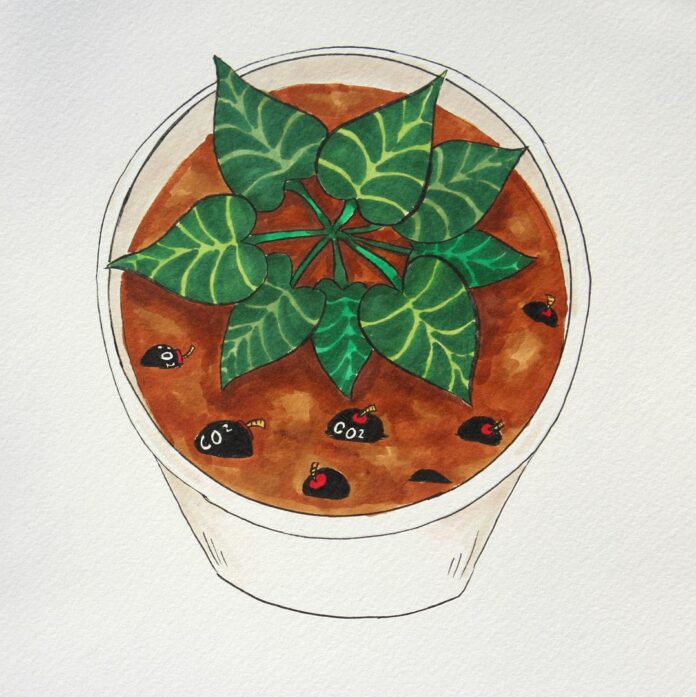I am a proud plant parent. I bought my first houseplant as a teenager — a humble fern, which I admittedly killed within two weeks. Cause of death: dehydration. My second houseplant was an innocent succulent. Cause of death: overhydration. A truly tragic tale, I know. Nevertheless, I have spent the last decade spending my savings account on a plethora of species; killing fewer and fewer each year. Currently, my collection sits comfortably at around 35 houseplants and I have only slowed down as I have run out of window space.
I am not the only one who has recently acquired a fascination for collecting these tropical beauties, though. There has been a significant increase in houseplants since the pandemic. Some sources state that the interest in houseplants increased when COVID-19 caused many people to adopt a remote work environment and were forced to stare at the same four, beige walls of a home office all day.
More than aesthetics, though, there are actual health benefits to cluttering your house with live plants. One study found that 74 per cent of people who purchased houseplants during the pandemic experienced “emotional benefits.” For many, taking care of a plant can give people a purpose and create some kind of routine. Similarly to how getting out in nature can improve our mental well-being, bringing plants indoors — into our living spaces — is also said to have impressive psychological benefits.
I have purchased many of my plants not just for their great looks and personality, but for their unique ability to purify the air in my house. Species such as spider plants, pothos, peace lilies, and snake plants are all listed as plants that have filtration benefits. Many of these can filter harmful toxins such as carbon monoxide (commonly from vehicles in a garage), benzene (found in detergents), and ammonia (found in some cleaning products).
Like with many great things though, there are often sustainability downfalls to them; even with plants. Although the plastic pots that nursery plants are sold in are an obvious pollution issue, it is the soil that they sit in which is actually a significant cause for concern. Peat moss is defined as decomposed organic matter, specifically material found in bogs (wetlands). It is especially useful for its ability to maintain a steady moisture balance in the soil while also decreasing the likelihood of soil-based diseases. It is often mixed in regular potting soil, or many choose to mix it into their pots to optimize the health of their plants. I know that I certainly didn’t think that the soil I was purchasing for my plants could be harmful because, let’s face it, it is literally dirt. How can dirt be unsustainable?
The issue with peat moss is that it takes thousands of years for the plant matter to break down and turn into the fibrous material we know as peat moss. As such, these wetlands house a seriously impressive amount of carbon dioxide. When we harvest this material from the earth we simultaneously release large amounts of CO2 into the atmosphere. The Washington Post described peat moss as a “carbon bomb,” stating that although it only covers 3 per cent of the earth, it stores nearly 30 per cent of the carbon dioxide stored by our soil.
Peat moss isn’t all bad though if we leave it alone. Think of it as a big, fibrous sponge that, alongside trees, soaks up a good chunk of free-floating greenhouse gasses. There can be some real climate change benefits to it. But the key here is to stop harvesting it, no matter how much it helps our houseplants thrive. It’s as simple as swapping out your usual potting soil for a peat moss alternative. Mother Earth will thank you for it.
Sydney is a BA English major, creative writing student, who has been a content contributor for The Cascade and is now the Opinion editor. In 7th grade, she won $100 in a writing contest but hasn’t made an earning from writing since. In the meantime, she is hoping that her half-written novels will write themselves, be published, and help pay the bills.


